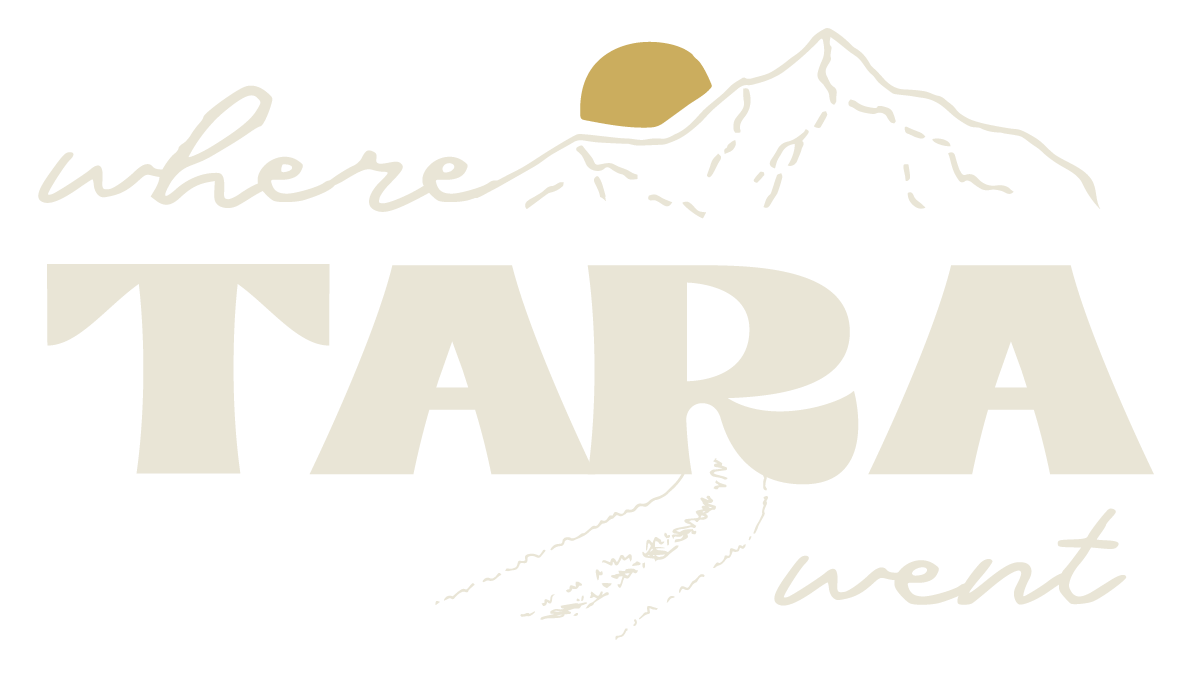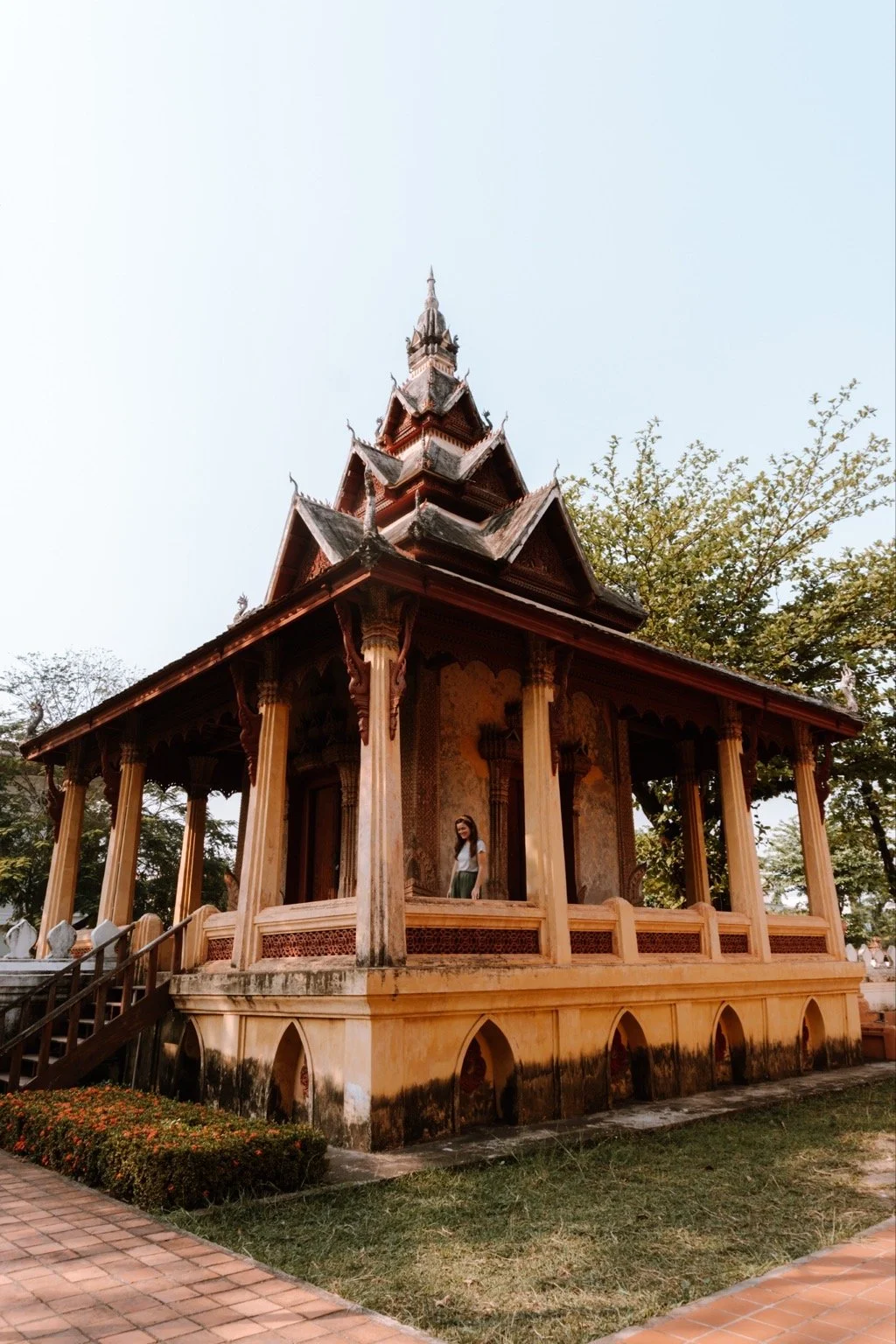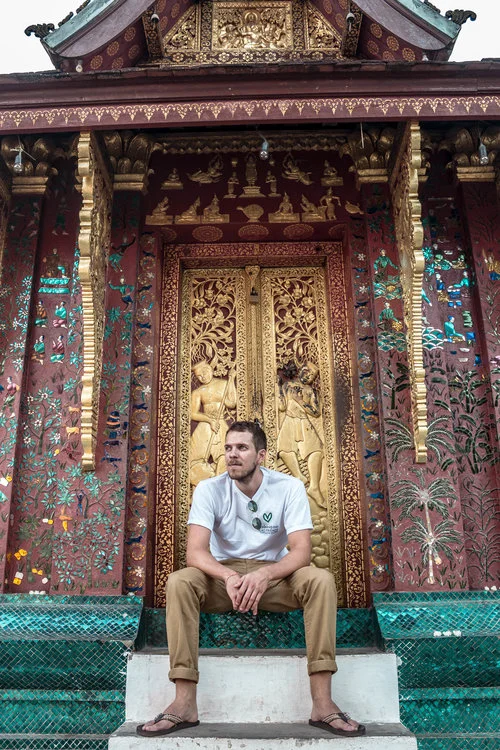how to kayak the Nam Ha River in Laos
If you’re into travel adventures that combine local knowledge, community-based tourism initiatives, and physical activity, and rugged nature— kayaking the Nam Ha River in northern Laos is the next destination you should put on your itinerary. Kayaking the Nam Ha River in the northern part of Laos is a scenic escape for intrepid travelers looking for off-the-beaten path adventures that bring them back to nature.
After my trekking experience with Discovering Laos, I woke and headed out on a kayaking journey down the Nam Ha River. Less polluted than either the Mekong or the Nam Khan, the Nam Ha River is a blend of idyllic views and rugged nature.
Na Lan Village start ↴
After a day’s trek to Na Lan Village and a night sleeping in the Khmu comforts of Sambayler Homestay, we woke up the next morning and packed our things. Any gear, sunscreen, or snacks we wished to have with us on the river were put into dry bags. These were supplied by Discovering Laos, but you are welcome to bring your own. Anything we didn’t want to bring with us on the kayaking trip, we gave to the guides to be put into a tuk-tuk. The tuk-tuk would meet us at the end of our time kayaking.
The wonderful woman of Na Lan Village cooked our breakfast, again over a single fire. After eating, we were fueled up and ready to kayak. The starting point was the river access point at the village.
Our local guides, most of who were Khmu, fitted us with helmets, life jackets, and paddles. We watched a bow and arrow presentation and tried our hands at husking corn the traditional way, while the guides prepared our kayaks with our dry bags and other various equipment.
{rough} water adventure itinerary ↴
10:45 AM - After everything was settled and we had all eaten, we were on our way
12:12 PM - A little less than 2 hours into our paddling, we stopped for a quick look at Na Lan Nuea village. This Khmu village was once part of the village we stayed in overnight but, in order to maintain smaller community sizes, they split into two. Na Lan Nuea is home to only 138 people. The traditional Khmu homes in this village are on stilts with woven bamboo acting as the walls of the house. There were beautiful vegetable gardens that our guides pointed out to us. When I asked who the gardens belonged to, our main guide replied, “the people.”
12:42 PM - Soon after stopping at Na Lan Nuea, we took a break at another village nearby called Nam Koi. This village was Lanten, but stood out as its people were remarkably more impoverished. There were many people who had cloth bandages wrapped around wounded feet and broken arms. It was humbling. However, the villagers spin cotton and dye it with indigo. The goods made during this process help support the village economically. Unfortunately, there are not many tourists who buy from the villagers, and thus the artisans have no way to promote their handicrafts.
1:30 PM - We took a break for lunch at a little sandbank which sat perfectly on the bend of the river. Since food had been prepared and packed from our homestay village, it was a simple meal and a quick stop. Khaiphaen {riverweed}, cabbage, chili jeow, rattan, and duck meat {for the carnivorous} accompanied sticky rice. We ate with our hands, as is custom, and then we were back on the river.
3:50 PM - Quick stretch break on a sandbank. This was also at the start of golden hour, which is always my favourite hour in Laos.
5:45 PM - Land ahoy! After a day out on the river, we arrived to the village where our tuk-tuk from the starting point awaited. While our guides packed away the inflatable kayaks and other various gear, we changed our clothes. There was a single, communal, outdoor bathroom that the villagers graciously let us use.
6:35 PM - Return to Luang Namtha {city}. The tuk-tuk ride from our kayak disembarkation to the doors of our hotel took a little less than 1 hour. After a shower and a meal in the city, we were all tuckered out and ready for sleep!
local river guides ↴
Each of us was accompanied by a local guide in our kayak. This was primarily because the water was low, making it much harder to paddle. Our guides were river masters and got us over the bits of water when we were stuck on rocks. Aside from being exceptionally skilled at navigating shallow waters, our guides were hilarious. My guide, Dang, kept me laughing throughout the entirety of our time on the river.
All of our guides created an intrepid experience that was sprinkled with insight about local culture and nature know-how. Some of them picked fruits from the low-hanging trees as we passed by them on the river. Others made crowns for us out of twigs and leaves.
I was reminded on our kayaking journey just how important it is to support companies that employ locals. The money from your booking creates economic opportunities for the local community.
what to pack + what to wear ↴
You’ll want to pack as light as possible so that your kayak is light and fast. Here’s what you should make sure you have with you or on you:
waterproof camera gear- GoPro, DSLR waterproof case
dry bag- most companies will provide one for you, but you will need to check with them or bring your own to be safe
baseball cap- it’s dorky to wear under your helmet, but it’s important to keep the harsh sun off of you
sunscreen/suncream- consider an eco-friendly brand that helps protect the ecosystems of the river
sunglasses
bug spray- mainly necessary for wet season when mosquitoes are at their peak numbers
t-shirt/tank top + shorts- to cover yourself up
water-friendly shoes- Chacos and Tevas are among my favourite
A note about wearing clothing over your swimwear: Laos is a conservative country. Even though you are fine wearing your togs {swimsuit}, it is more culturally appropriate to wear a top and shorts over your bikini. As a matter of fact, bikinis aren’t actually appropriate in Laos outside of hotel swimming pools.
best season for kayaking the Nam Ha ↴
While I thoroughly enjoyed my time kayaking the Nam Ha, I was invited during the dry season. The river was low, which meant it was missing its usual rapids and fast current. Our guides did an enormous amount of work getting us around the rocks that would normally be covered by streaming water.
Wet season occurs in Laos between late June and early September {approximately}. During this time, the river swells and moves faster. There is a higher chance of rain, but that only adds to the excitement.
Though I recommend kayaking anytime you make it to northern Laos, wet season is ideal for a quicker-paced journey down the Nam Ha.
booking a Nam Ha River adventure ↴
You can book your Nam Ha kayaking adventure through different agencies in Luang Namtha {city}. As with the trekking, the most highly-praised of these agencies are Green Discovery Laos and Discovering Laos. Alternatively, you can make a booking or submit an inquiry on their websites.
Disclaimer: I was a guest, hosted by the Luang Namtha Tourism Board. As always, all opinions are my own and my experience is expressed authentically.





































